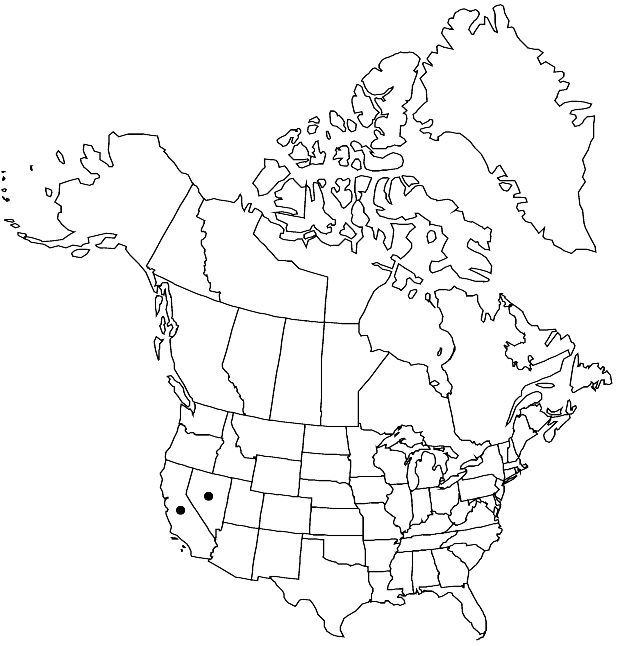Difference between revisions of "Caulanthus glaucus"
Proc. Amer. Acad. Arts 17: 364. 1882.
FNA>Volume Importer |
imported>Volume Importer |
||
| (3 intermediate revisions by 2 users not shown) | |||
| Line 6: | Line 6: | ||
|place=17: 364. 1882 | |place=17: 364. 1882 | ||
|year=1882 | |year=1882 | ||
| + | }} | ||
| + | |special_status={{Treatment/ID/Special_status | ||
| + | |code=E | ||
| + | |label=Endemic | ||
| + | }}{{Treatment/ID/Special_status | ||
| + | |code=C | ||
| + | |label=Conservation concern | ||
}} | }} | ||
|basionyms= | |basionyms= | ||
| Line 11: | Line 18: | ||
|name=Streptanthus glaucus | |name=Streptanthus glaucus | ||
|authority=(S. Watson) Jepson | |authority=(S. Watson) Jepson | ||
| + | |rank=species | ||
}} | }} | ||
|hierarchy=Brassicaceae;Brassicaceae tribe Thelypodieae;Caulanthus;Caulanthus glaucus | |hierarchy=Brassicaceae;Brassicaceae tribe Thelypodieae;Caulanthus;Caulanthus glaucus | ||
| Line 36: | Line 44: | ||
-->{{#Taxon: | -->{{#Taxon: | ||
name=Caulanthus glaucus | name=Caulanthus glaucus | ||
| − | |||
|authority=S. Watson | |authority=S. Watson | ||
|rank=species | |rank=species | ||
| Line 50: | Line 57: | ||
|publication title=Proc. Amer. Acad. Arts | |publication title=Proc. Amer. Acad. Arts | ||
|publication year=1882 | |publication year=1882 | ||
| − | |special status= | + | |special status=Endemic;Conservation concern |
| − | |source xml=https:// | + | |source xml=https://bitbucket.org/aafc-mbb/fna-data-curation/src/2e0870ddd59836b60bcf96646a41e87ea5a5943a/coarse_grained_fna_xml/V7/V7_1170.xml |
|tribe=Brassicaceae tribe Thelypodieae | |tribe=Brassicaceae tribe Thelypodieae | ||
|genus=Caulanthus | |genus=Caulanthus | ||
Latest revision as of 22:30, 5 November 2020
Perennials; glabrous throughout. Stems erect or ascending, unbranched or branched distally, 3–12 dm. Basal leaves not rosulate; petiole 1–8 cm; blade broadly obovate or oblong to elliptic, 2–10 cm × 20–120 mm, margins usually entire, rarely coarsely dentate-sinuate. Cauline leaves (distalmost) shortly petiolate; blade lanceolate to linear, 1–3.5 cm × 3–10 mm, margins entire. Racemes (densely flowered), without a terminal cluster of sterile flowers. Fruiting pedicels ascending, 5–35 mm. Flowers: sepals erect, (purplish or green to yellowish green), lanceolate, 7–12 × 2–3 mm (equal); petals purple or yellowish green, (not or faintly veined),11–17.5 mm, blade 3–6 × 1.8–2.7 mm, not crisped, claw narrowly oblong to narrowly oblanceolate, 8–12 × 3–4 mm; filaments tetradynamous, median pairs 3.5–8 mm, lateral pair 2–7 mm; anthers narrowly oblong, equal, 3.5–4.5 mm. Fruits divaricate to ascending (often distinctly curved), terete, 4.5–15.5 cm × 1–1.6 mm; valves obscurely veined; ovules 180–210 per ovary; style 0.2–1 mm; stigma strongly 2-lobed (lobes 0.9–1.5 mm, connivent, opposite replum). Seeds 1–2 × 0.8–1.2 mm. 2n = 20.
Phenology: Flowering Apr–Jun.
Habitat: Sagebrush scrub, dry slopes and rocky outcrops
Elevation: 1500-2400 m
Discussion
Of conservation concern.
Caulanthus glaucus is known in California from Inyo and Mono counties and in Nevada from Esmeralda, Mineral, and Nye counties.
Selected References
None.
